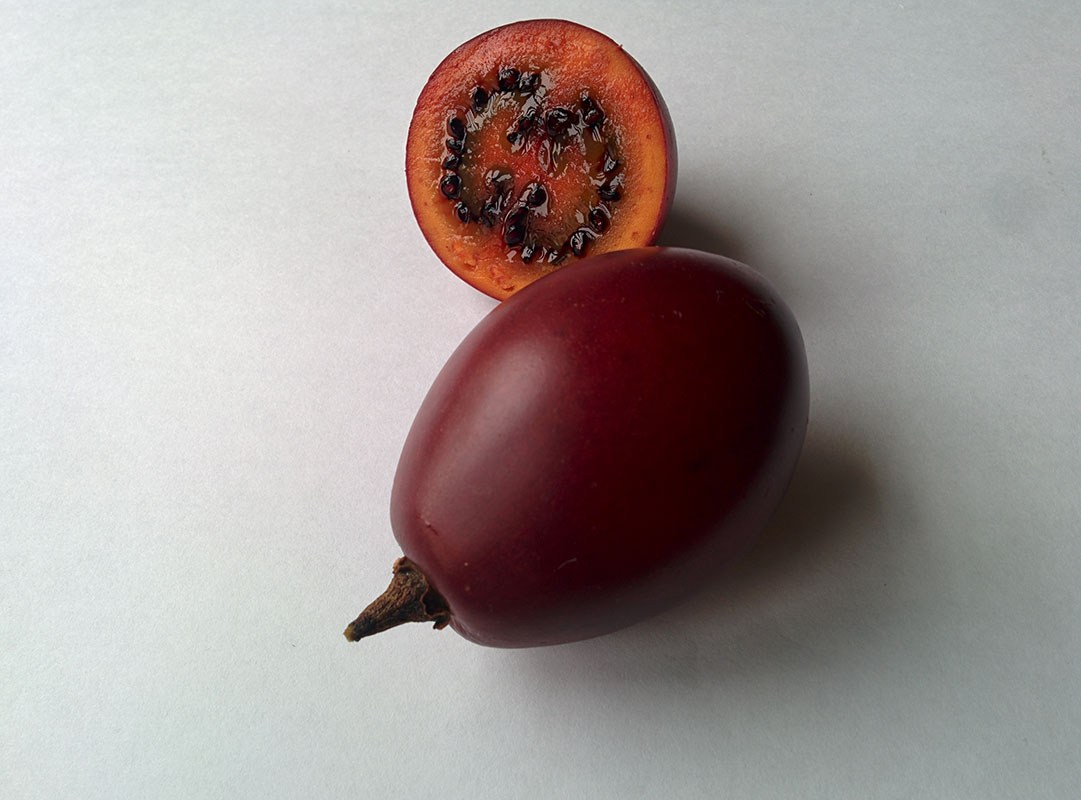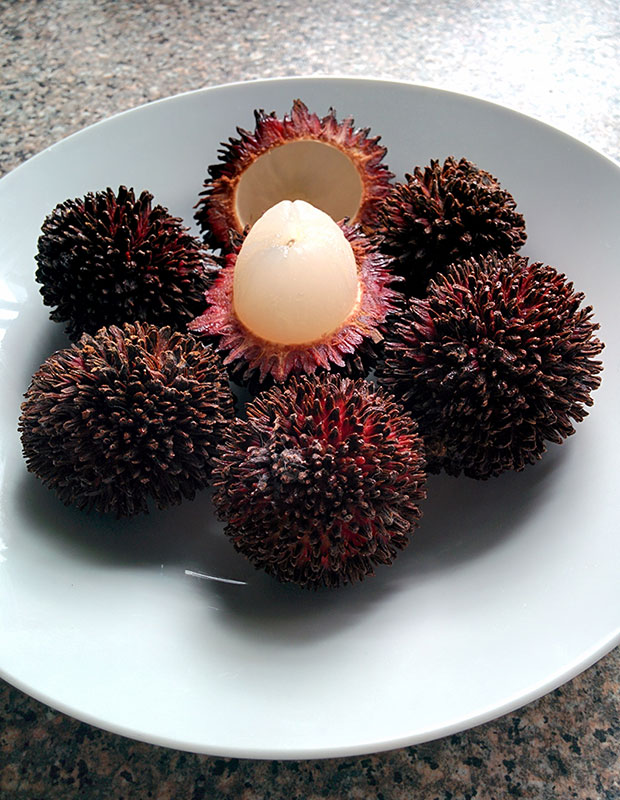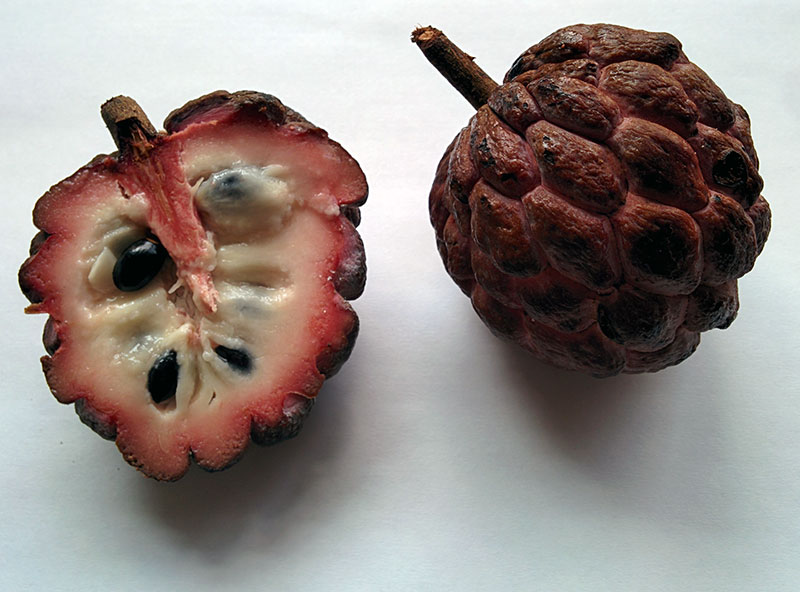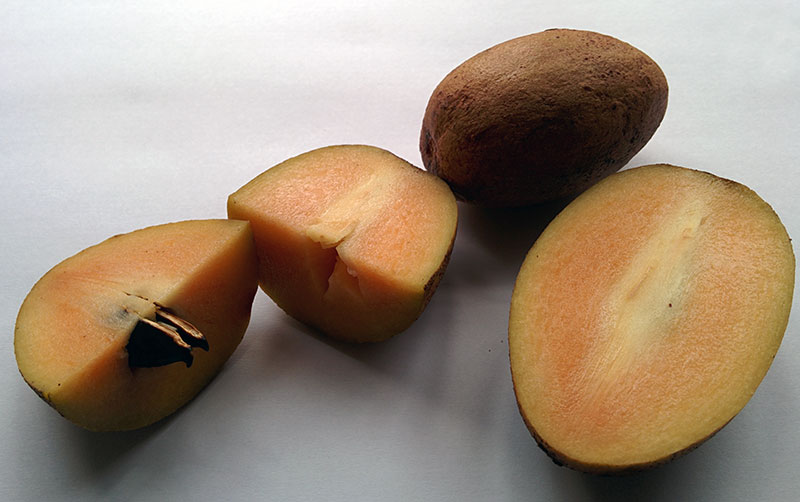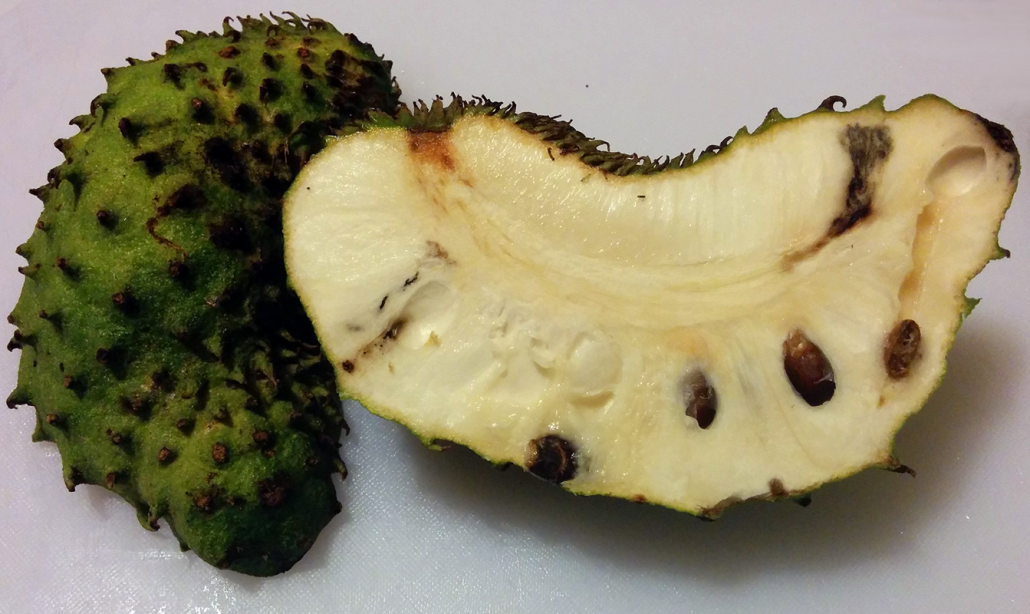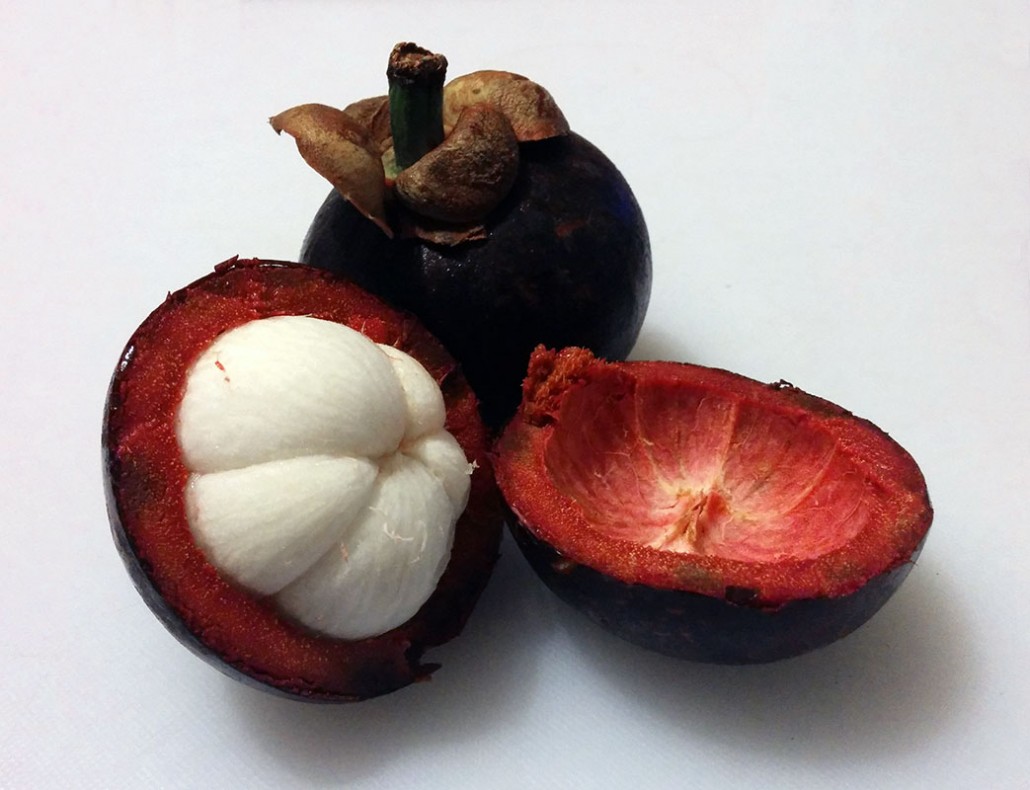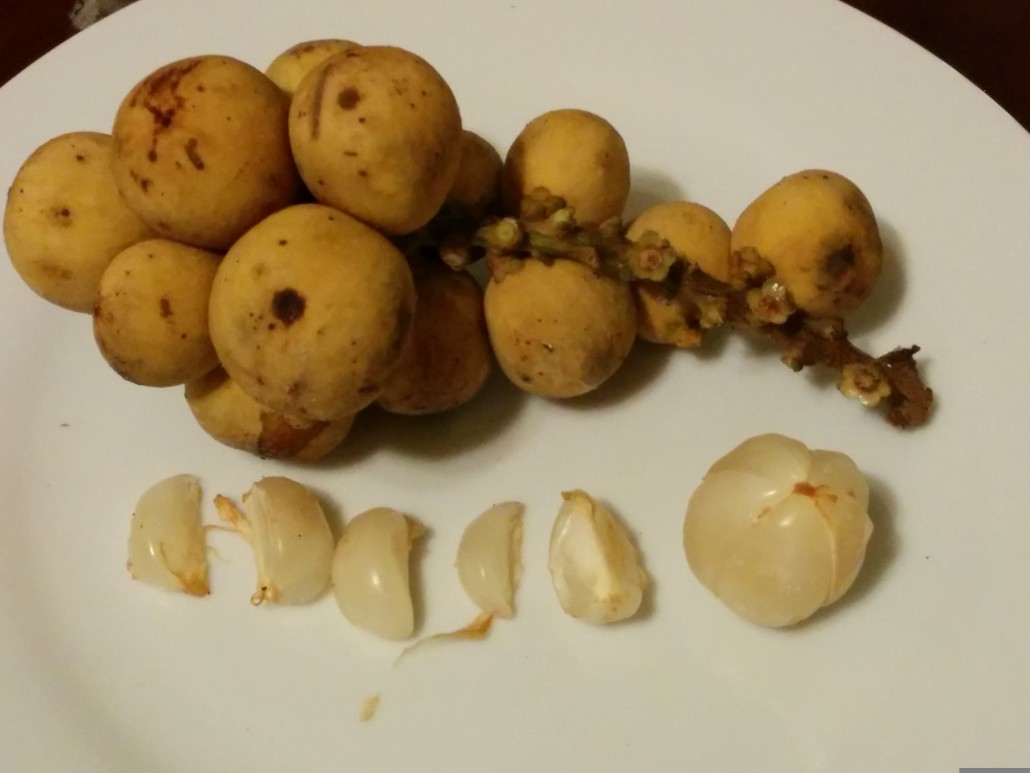Fruit – Tamarillo
/in Food, Malaysia /by Angela TurnbullThe tamarillo is also called a “tree tomato”. It doesn’t have much of an aroma to speak of, and the purple ones look like oblong plums (there are also red and yellow versions). The outer skin is much thicker than a tomato, and inedibly bitter. The flesh inside is orange, and softly firm – similar to a non-grainy tomato tecture, but more firm like a persimmon. Inside the flesh are small seeds, encased in a dark red juicy pulp. When cut, the juice tends to run out a little bit, and looks like the juice from a blood orange (very red). The taste is tangy, and savory-sweet. It tastes like a deeply ripe tomato, with a hint of passionfruit and guava. The aftertaste is mostly savory, like the aftertaste of a somewhat tart fresh tomato.
There’s a wikipedia article at: https://en.wikipedia.org/wiki/Tamarillo
Diving at Pulau Tioman, October 2015
/in Malaysia /by Angela TurnbullAnother SCUBA video!
Fruit – Pulasan
/in Food, Malaysia /by Angela Turnbull
Pulasan is a close relative of the rambutan (and lychee). Its outer spines are much more stiff than the rambutan’s, so it feels rough, though not sharp. The spines are just stiff enough to use as leverage in order to peel the fruit, which makes getting into these the easiest version of these fruit relatives so far – just grab on and pull or twist, and the skin comes right off. It doesn’t really have much of an aroma, just a mild sweet fragrance. The edible inside flesh is juicy and springy-soft, like a firm grape. Its flavor is basically just sweet, with no real other distinguishing qualities – it tastes like a mild lychee, but it could also be compared to a very bland grape. There’s a single large seed in the middle of each fruit, which is not eaten. There is a bark-like shell around the inner seed, like a rambutan, but it only sometimes clings to the edible flesh, making this fruit significantly easier to eat.
There is a wikipedia article about pulasan at https://en.wikipedia.org/wiki/Pulasan
Fruit – Sugar Aple
/in Food, Malaysia /by Angela Turnbull
The sugar apple (sometimes called a custard apple or sweetsop) is related to the soursop and the cherimoya. Most of them are actually green colored, but we found some really nice looking purple ones. The outer skin is relatively soft, but fairly thick, and kind of resembles a pine cone with its bumpy segmented shape. Inside, a whole bunch of small black seeds are individually encased in the creamy white flesh segments. The flesh is somewhat grainy, and tastes sweet and creamy, almost like a mild banana-mango custard. There is no real smell to the fruit itself.
More information about sugar apples: https://en.wikipedia.org/wiki/Sugar-apple
Fruit – Ciku (Sapodilla)
/in Food, Malaysia /by Angela Turnbull
Called a sapodilla back home, and ciku (chikoo, chiku) in Malaysia (and sapota or zapota in other places), we actually had a hard time getting a ripe version of this. From the outside, it looks rather like a small potato, having a rough brown, grainy skin and oblong appearance. When ripe, they are somewhat soft when squeezed, like a tomato. The inside flesh is soft and and earthy brown in color, it looks and feels almost like a well-cooked sweet potato. Contained within are a few hard black seeds. When unripe, the flesh is hard and extremely drying to the mouth, like an unripe persimmon (or the most heavily over-brewed tea you can think of). When ripe though, the soft flesh is deliciously sweet and malty, almost like a toasted brown sugar or caramel flavor.
For more info, see the wikipedia article: https://en.wikipedia.org/wiki/Manilkara_zapota
A Video about Where We Live
/in Malaysia /by Angela TurnbullThe video highlights some of the interesting sights from the area, along with how some things are both similar to and different from back home.
Fruit – Soursop
/in Food, Malaysia /by Angela TurnbullSoursop has a somewhat soft green or green-yellow skin, covered with soft spine bumps (the spines are also really soft, and usually break off). It varies in size somewhat but is about the size of a coconut. The hard black seeds are a flat oval shape, and inedible. The flesh is offwhite, and quite soft. It’s juicy and a little grainy, with some stringy fibers like you might find in a very stringy mango. We tried eating it with a spoon at first because it is so soft, but the fibers made that not work out very well. It smells like banana, pineapple, and gardenia flowers. It tastes, again, like banana-pineapple-gardenia, plus has some sour and acidic flavor. We’ve had soursop juice before (it’s pretty easy to get, soursop also grows in Mexico and multiple places in South America) and the fruit basically tastes exactly like the juice, just with more fiber.
There’s more information on soursop here: https://en.wikipedia.org/wiki/Soursop
Fruit – Mangosteen
/in Food, Malaysia /by Angela TurnbullMangosteen is called the “queen of fruit”. It is the size of a tangerine. The exterior is a dark purple color, and when first picked is fairly soft, but it hardens over time. Inside, the white flesh segments of the fruit are edible, though the bigger ones (there are almost always only one or two big ones) contain seeds which aren’t commonly eaten. The flesh is juicy and soft, with a bit of softly stringy fiberousness (the fiber gets a little tougher in older fruits, and is more apparent in the larger segments). It tastes like a really good white grape juice, with a bit more floral notes. The fruit strikes almost a perfect balance between sweet and light acidity, and the flavor is strong but not overwhelming, so they appeal to almost all tastes. Unfortunately they don’t can/freeze/freeze dry well, and most of the flavor is lost in the process. Mangosteens were banned for import into the United States until 2007 or so, so they’re still not widely available there. However, if you do get a chance to try fresh mangosteen, do so! If you like fruit at all, you’ll probably like them.
More mangosteen info: https://en.wikipedia.org/wiki/Mangosteen
Fruit – Duku
/in Food, Malaysia /by Angela TurnbullLangsat and duku. These are related (different groups of cultivars of the same species), and vary slightly in appearance and taste (though not so much that I would be able to tell you what the differences are). These were labeled as “dukong” which is supposed to be a cross between langsat and duku. Similar to a lychee, there is a peelable thin outer skin which contains the inner tender flesh. The flesh divides into segments (like a mangosteen) and some larger segments contain a single seed. The fleshy segments are very juicy, and have a flavor like a sweet, mild grapefruit (with a tartness to it instead of the bitterness a grapefruit would have).
There’s a wikipedia article if you want more information at https://en.wikipedia.org/wiki/Lansium_parasiticum

